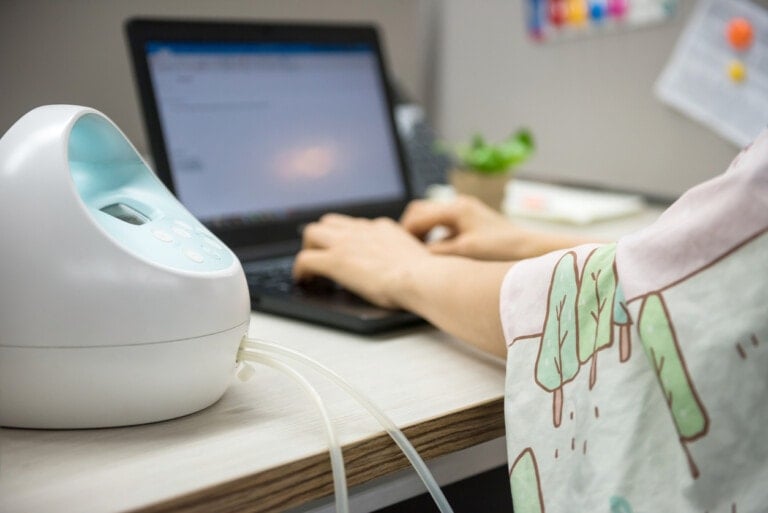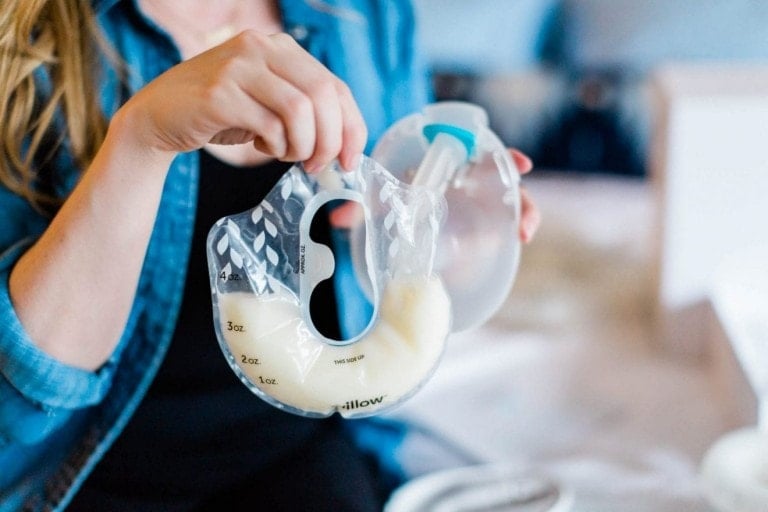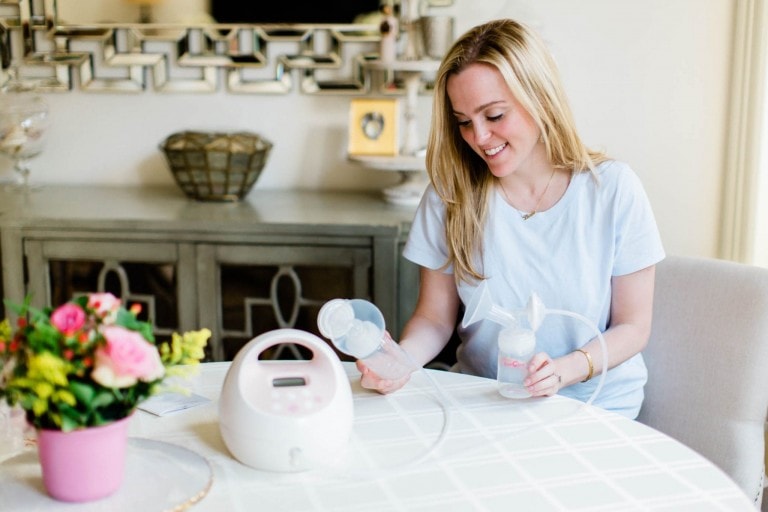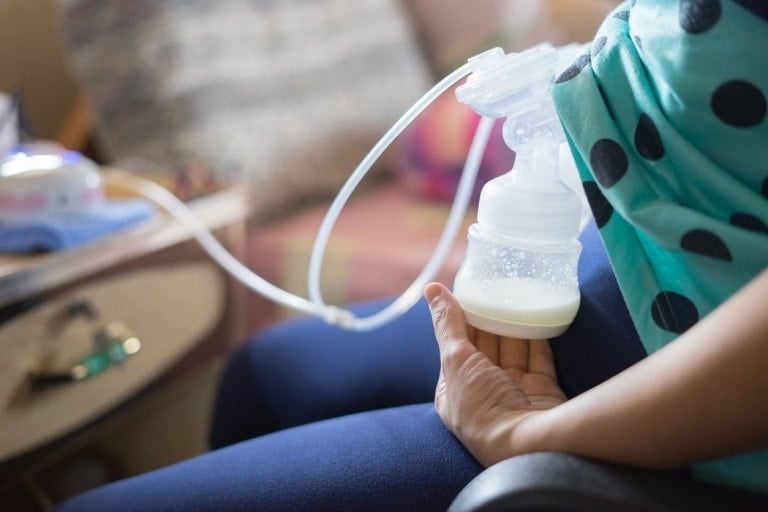As a breastfeeding mama who returned to work at about six months postpartum, I’m not going to lie — the transition is not always easy. Leaving your baby for possibly the first time and balancing work and family life can be challenging for many. However, as a lactation consultant, I aim to educate you so you know some tips to help you maintain your milk supply while also being a working mama.
Tips for Maintaining Milk Supply When Returning to Work
1. Do a Dry Run
I recommend doing a dry run of your first day back at work. Perhaps have someone come and watch the baby or have your partner stay with the baby. Practice getting out of the house, packing what you’ll need, and even pumping a few times to ensure everything works. This way, you won’t be adding stress to your “big day” back to work.
2. Practice Using Your Pump
Practicing pumping is so important. You’ll want to ensure you have the correct pump, parts, and pieces. My first step is to ensure you have the correct flange sizes that fit your breasts. Using the incorrect flange sizes may not only be uncomfortable, but they also may not be able to properly empty your breasts, which will be essential to maintaining supply when you are away from your baby.
Take some time to check that all your pump parts are present and in working order. Then, practice how to use your pump. I recommend watching a YouTube video or reading through the pump manual so you know the different settings and options.
3. Set Your Schedule
The next critical piece to maintaining milk supply is replicating your home pumping schedule at work. If your baby typically feeds at 8 a.m., 12 p.m., and 3 p.m., you’ll want to try to pump as close to those times as possible while you’re away from your baby at work. This will ensure that you are emptying your breasts frequently enough to maintain your supply.
4. Get a Little Handsy
Learning how to be “hands-on” while pumping is also essential. Breastmilk supply is based on demand. The more we empty our breasts, the more we fill at the next feeding. Breast massage and breast compressions have been shown to yield a third more milk.
You have breast milk ducts throughout your breasts. Massaging all around your breasts will be vital to empty them and ensure they will fill back up fully. I recommend practicing this when pumping so that you become more comfortable with this technique. When you return to work, you’ll be a hands-on pumping pro.
5. Breastfeed as Often as You Can
I always remind my private lactation consulting clients that their baby will empty their breasts better than any pump ever will. Whenever you can, try to breastfeed your baby.
For example, trying to squeeze in a breastfeeding session or two before or after work is a great way to ensure that your baby is fully emptying you instead of relying on your pump to do the hard work for an entire day. However, that may not be possible for some people whose shifts may be long. That’s okay! Use your days off to have a “babymoon.” Spend your days skin-to-skin with your baby, feeding as often and as long as they want. This will help boost your supply.
If you find your supply is dropping, then perhaps take a day where you only feed your baby from the breast instead of pumping. Or mix in a pumping session after one or two feeds of the day. In addition, perhaps (don’t hate me) you let your baby nurse at night or even add a pumping session throughout the night to keep your supply up.
6. Communicate With Caretakers
I also recommend talking to those caring for your child while you are at work. Talk about your baby’s feeding schedule and what your goals are with feeding. For example, if you want to try feeding your baby as soon as you pick them up from daycare, say, “They will take their last bottle at noon, and my goal is to be here to feed them for their 3 p.m. feeding.”
7. Don’t Stress About Volume
Another reminder I provide often is don’t worry if your supply starts to drift off a bit as the day goes on. Researchers observed that milk volume is typically greater in the morning (a good time to pump if you need to store milk). Supply falls gradually as the day progresses.1
Some mamas report that they have “pumping anxiety” and get stressed out and stare into the bottom of the bottle as they’re pumping to see what they’re collecting. If you are anxious about your pumping output, I recommend putting socks over the bottom of the bottles so you can’t see what’s coming out. Keep yourself occupied with something else during your pumping sessions.
8. Talk to Your Employer Before Returning to Work
Finding a comfortable and private place to pump will allow you to relax fully and yield more breastmilk output while pumping. I always recommend my private clients discuss their breastfeeding goals with their employer before returning to work. You can ensure that you have the time to pump and a private and comfortable place to pump once you return to work. Nothing is worse than navigating this on your first day back at work just to find out there is nowhere to pump.
I also recommend bringing your phone and watching videos of your baby or looking at pictures of them while you’re pumping. This has been shown to help you relax, release those feel-good hormones, and yield more milk output.
9. Take Care of Yourself
Maintaining an abundant milk supply is a lot of work and takes up a lot of energy. Ensure you’re drinking adequate water, eating a well-balanced diet, and getting plenty of rest.
Monitoring your stress levels is vital as this can significantly affect your milk supply. If you know that adding a 10-minute walk on your lunch break or a 30-minute gym session after work helps your sanity, then take the time and do that for yourself. These little actions will pay dividends.
10. Prepare for Storage
Storing your liquid gold is just as important as pumping it. Make sure you’re up to date on breastmilk storage guidelines. Confirm that a fridge is also available to store your milk (breastmilk can be stored in the refrigerator for four days). If not, bring a cooler with ice packs (breastmilk can be safely stored in a cooler with ice packs for 18 hours.)
I recommend storing your milk in increments that your baby takes per feeding. For example, if your baby takes 3-4 ounces per feeding, store about 3-4 ounces of breast milk per storage bag before freezing it. Don’t forget to label the bag with the amount and the date it was stored. For storage-saving purposes, lay your bags flat to freeze instead of sitting them up because that will take up much more room in your freezer.
11. Get Ready the Night Before
Lastly, after your dry run of returning to work, list everything you may need during your workday. Just in case of a little milk mishap, things like your pump and pump parts and an extra shirt. Practice packing your pump bag and perhaps do it the night before so you’re not scrambling to ensure you have everything you need. Remember that this may take some time to get used to, and the first few days may be challenging for mom and baby.
Above all, give yourself some grace and a pat on the back. Being a working and breastfeeding/pumping mama is no easy feat. Your milk supply will undergo some adjustments, but it will be nothing to worry about if you are consistent with these tips. You are amazing!

























